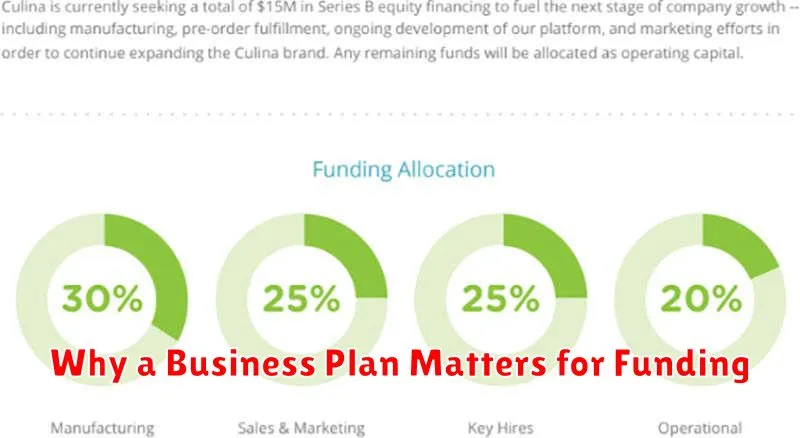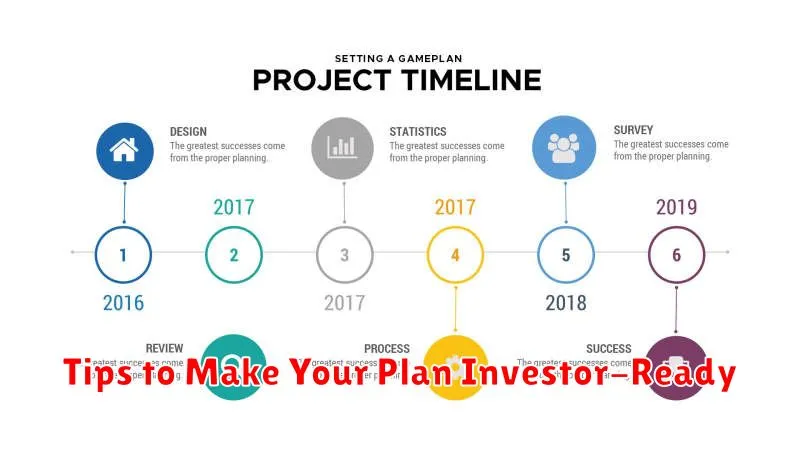Creating a compelling business plan is crucial for attracting investors. This guide will walk you through the essential steps to craft a business plan that not only secures funding but also showcases the viability and profit potential of your venture. Learn how to present your market analysis, financial projections, and executive summary in a way that resonates with investors and persuades them to invest in your company’s success. We’ll cover everything from identifying your target audience to demonstrating a clear path to return on investment (ROI), equipping you with the tools to build a winning business plan that attracts the right investors for your startup or growing business.
Why a Business Plan Matters for Funding

A well-crafted business plan is crucial for securing funding. It serves as a roadmap for your business, demonstrating your understanding of the market, your target audience, and your strategy for success. For investors, it’s a vital tool to assess the viability and potential of your venture.
Investors need to see a clear articulation of your financial projections, including revenue streams, expenses, and profitability. A business plan provides this crucial information, allowing them to understand your financial model and make informed decisions about investment. This transparency builds trust and confidence in your ability to manage finances effectively.
Beyond financials, a strong business plan showcases your team’s expertise and your competitive advantage. It highlights your understanding of the risks and challenges involved, and presents mitigation strategies. This comprehensive approach demonstrates preparedness and significantly increases your chances of securing funding.
In short, a business plan is not just a document; it’s a compelling narrative that persuades investors to believe in your vision and invest in your future. It’s the foundation upon which you build a successful fundraising campaign.
Executive Summary: What to Include
The executive summary is the first, and often only, section of your business plan that many investors will read. Therefore, it must be compelling and concise. It should immediately grab attention and clearly articulate the value proposition of your business.
Key elements to include are: a brief company description highlighting your mission and vision; a concise explanation of your products or services and their unique selling proposition (USP); a summary of your target market and market opportunity; your business model, including revenue streams and cost structure; your financial projections, focusing on key metrics like revenue growth and profitability; and finally, a clear statement of your funding request and intended use of funds.
Remember to maintain a professional and confident tone throughout. Use strong verbs and avoid jargon. Keep it brief—ideally, one page—and ensure it accurately reflects the information contained in the full business plan. A well-crafted executive summary can significantly increase the likelihood of securing investor interest.
Market Research and Competitive Analysis
A compelling business plan requires a thorough understanding of your target market and the competitive landscape. This section should demonstrate your deep knowledge and highlight the opportunity you’re pursuing.
Your market research must clearly define your ideal customer profile (ICP), including demographics, psychographics, needs, and purchasing behaviors. This informs your marketing strategy and ensures you’re addressing a real market need.
Competitive analysis involves identifying your key competitors, analyzing their strengths and weaknesses, and determining your competitive advantage. This could be through superior technology, pricing, customer service, or a unique value proposition. Highlighting your differentiation is crucial for investor confidence.
Present your findings using clear visuals like charts and graphs to effectively communicate market size, growth potential, and your competitive positioning. Quantifiable data strengthens your argument and showcases your preparedness.
Investors are looking for evidence of a well-defined market and a clear path to success. A robust market research and competitive analysis section demonstrates your understanding of the industry and increases the likelihood of securing investment.
Describing Your Product or Service Clearly

A compelling business plan hinges on clearly articulating your product or service. Investors need to understand its value proposition immediately. Avoid jargon; use concise, accessible language.
Focus on the problem your offering solves and the benefits it provides to customers. Quantify these benefits whenever possible, using data and metrics to demonstrate market demand and potential return on investment (ROI).
Highlight your unique selling proposition (USP) – what sets your offering apart from competitors. Explain your competitive advantage and how you will maintain it. This could be through superior technology, a stronger brand, or a more efficient business model.
Include a detailed description of your product features and functionality, but avoid overwhelming the reader with technical details. Instead, emphasize the user experience and the value delivered to the customer.
Finally, consider including a visual representation of your product or service, such as a mock-up or diagram, to enhance understanding and engagement.
Financial Projections and Funding Needs
A compelling business plan requires realistic and detailed financial projections. These projections should cover a minimum of three to five years, outlining anticipated revenue, expenses, and profitability. Key elements include income statements, cash flow statements, and balance sheets. These statements demonstrate your understanding of the market and your ability to manage finances effectively.
Clearly articulate your funding needs within the financial projections. Specify the amount of funding required, its intended use (e.g., equipment purchase, marketing campaign, working capital), and the proposed return on investment (ROI) for investors. A clear explanation of how the funds will contribute to business growth and profitability is crucial. Consider including different funding scenarios to illustrate flexibility and preparedness for various market conditions.
Sensitivity analysis is also vital. This involves demonstrating how your projections would change under different assumptions, such as varying sales growth rates or input costs. This showcases your ability to foresee potential challenges and develop contingency plans, building investor confidence in your preparedness.
Finally, present your financial information clearly and concisely, using charts and graphs to enhance readability. Ensure all assumptions are clearly stated and justified, supporting the credibility of your projections. A well-structured and transparent financial section is essential for attracting investors.
Operational and Marketing Strategies
A compelling business plan needs a robust operational and marketing strategy section. This section should detail how your business will function day-to-day and how you plan to reach your target market.
Operational strategies should clearly outline your business processes, including production, supply chain management, and customer service. Investors want to see a well-defined plan for efficient operations and cost control. Highlight key metrics such as production capacity, lead times, and inventory management. Include a plan for scaling operations to meet future demand.
Your marketing strategy should clearly articulate your target audience, your value proposition, and your chosen marketing channels. Investors will assess the feasibility and effectiveness of your proposed approach. Detail your marketing budget and the key performance indicators (KPIs) you will use to measure success. Show a clear understanding of market trends and competitive landscape.
A strong operational and marketing strategy demonstrates a clear vision for growth and profitability, ultimately increasing investor confidence in your business potential. A well-articulated strategy will showcase your understanding of market dynamics and the resources necessary to achieve your ambitious goals. Remember to show how your operations are aligned to your marketing efforts to create a synergistic and efficient business.
How to Present Your Team and Vision
A compelling team and vision presentation is crucial for attracting investors. Start by highlighting your team’s relevant experience and expertise. Showcase your members’ past successes and demonstrate how their skills directly address the challenges and opportunities presented by your business.
Next, articulate a clear and concise vision statement that encapsulates your company’s long-term goals. Investors want to see a strong sense of direction and understand how your company plans to achieve its objectives. This vision should be ambitious yet achievable, and aligned with market trends.
Use visuals to aid your presentation. Charts and graphs illustrating market size, target audience, and projected growth are effective. Keep the language simple and avoid jargon. Focus on conveying a strong sense of confidence, competence, and passion. Investors invest in people as much as in ideas; your presentation should reflect that.
Finally, be prepared to answer tough questions about your team’s capabilities and the feasibility of your vision. Thorough preparation and practice are essential to ensure a smooth and convincing presentation.
Tips to Make Your Plan Investor-Ready

To attract investors, your business plan must be concise, compelling, and demonstrate a clear path to profitability. Focus on presenting a strong executive summary upfront, highlighting key aspects of your business.
Clearly articulate your value proposition – what unique problem does your business solve and why are you the best positioned to do it? Quantify your market opportunity with solid market research and demonstrate a thorough understanding of your target audience.
Present a realistic and well-researched financial projection, including revenue models, cost structures, and key performance indicators (KPIs). Investors want to see a clear path to return on investment (ROI). Be prepared to justify your assumptions and demonstrate financial discipline.
Showcase a strong management team with relevant experience and expertise. Investors invest in people as much as ideas, so highlight the team’s capabilities and commitment.
Finally, make your plan visually appealing and easy to navigate. Use charts, graphs, and clear headings to present complex information concisely. Ensure your plan is error-free and professionally presented to reflect the seriousness of your venture.

